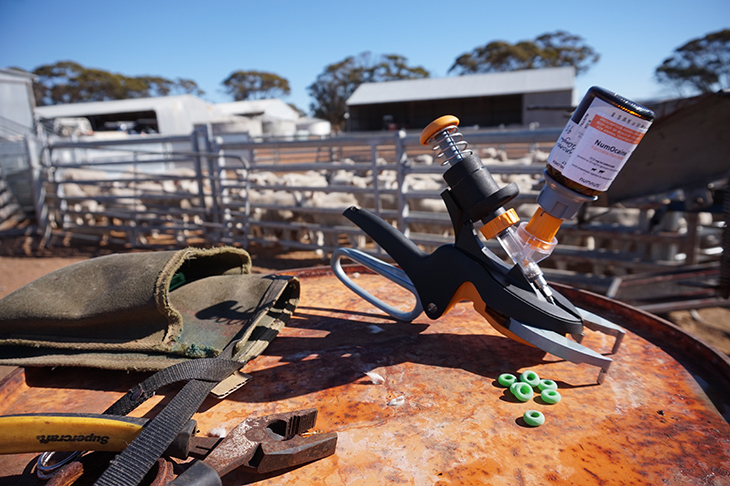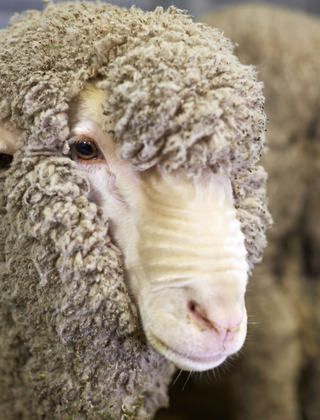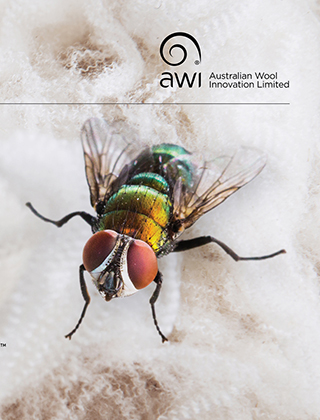Numnuts gathers momentum

An increasing number of woolgrowers across Australia are using the award-winning Numnuts® device to castrate and tail-dock their lambs with rubber rings, while also injecting the NumOcaine® local anaesthetic at the same application.
The Numnuts device at the sheep farm of Audrey Bird from Wickipin in WA who was involved in the trialling of Numnuts and who said: “We definitely noticed an improvement when using Numnuts, both in the yard and when walking the lambs back to their paddock.”
An increasing number of woolgrowers across Australia are using the award-winning Numnuts® device to castrate and tail-dock their lambs with rubber rings, while also injecting the NumOcaine® local anaesthetic at the same application.
It is the nature of research and development (R&D) that it can often take many years for an idea to result in a commercially available product – and many ideas don’t even make it far past the idea stage.
However, a recent success story is Numnuts. Numnuts was born in 2009, when Scottish design engineering firm 4c Design and Moredun Research Institute in Scotland partnered together to investigate the feasibility of a device that would provide pain relief to livestock during tail docking and castration. Recognising the need for an on-farm solution for sheep, AWI and MLA provided initial funding for R&D work. MLA invested additional funds for further R&D and to support commercialisation of the device.
Numnuts had its pilot launch last year, in Australia, and the product is now not only being steadily taken up by sheep producers, it is also winning awards. While exhibiting Numnuts at Wagin Woolorama in March this year, which was the first public display of Numnuts in Western Australia, the team from Numnuts were delighted to win the Show’s prestigious New Product Release Award.
“I'm very proud for Numnuts to win this award and I think it shows that the industry is serious about animal welfare,” said founder of Numnuts, Robin Smith.
“The great thing about Numnuts is it's a blood-free solution and provides a pre-operative anaesthesia. When the animals are coming out the cradle, they are showing significantly less stress and they are able to mother-up faster and walk back to the paddocks easier.
“What we've always tried to do with Numnuts is get ahead of the game. This product is only available in Australia at the moment, and it's a great news story for this country’s sheep and wool industry. Numnuts has come about from some very progressive leadership from AWI and MLA.”
Another demonstration of Numnuts’ growing renown is its win in June of a Technical Innovation award from the UK’s largest agricultural show, the Royal Highland Show, despite Numnuts not yet being on the market in the UK.
Although many woolgrowers have already completed this year’s lamb marking, those intending to use Numnuts later in the year are being encouraged by Robin to purchase the NumOcaine anaesthetic as soon as they can via their vet. If your vet is not already a NumOcaine stockist, they can quickly and easily register with Numnuts via the Numnuts website or on 1300 646 413. Any extra ordered by woolgrowers this year can also be used next year due to its two-year batch life (unopened bottle).
The Numnuts device, needles and spares, can be purchased via the Numnuts website or from a growing number of independent rural retailers.
More information: www.numnuts.store
This article appeared in the September 2020 edition of AWI’s Beyond the Bale magazine. Reproduction of the article is encouraged, however prior permission must be obtained from the Editor.















